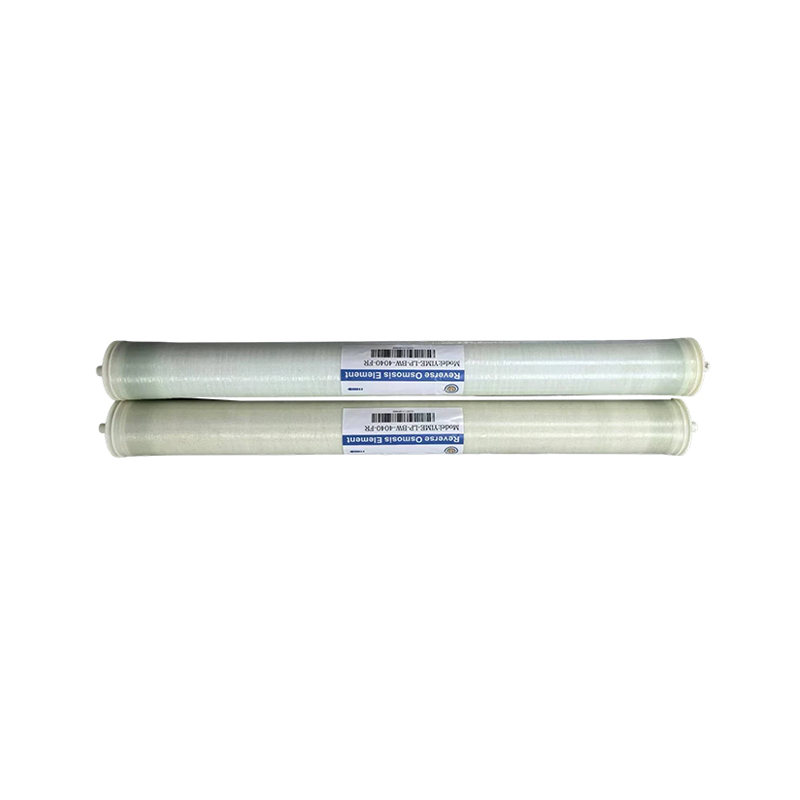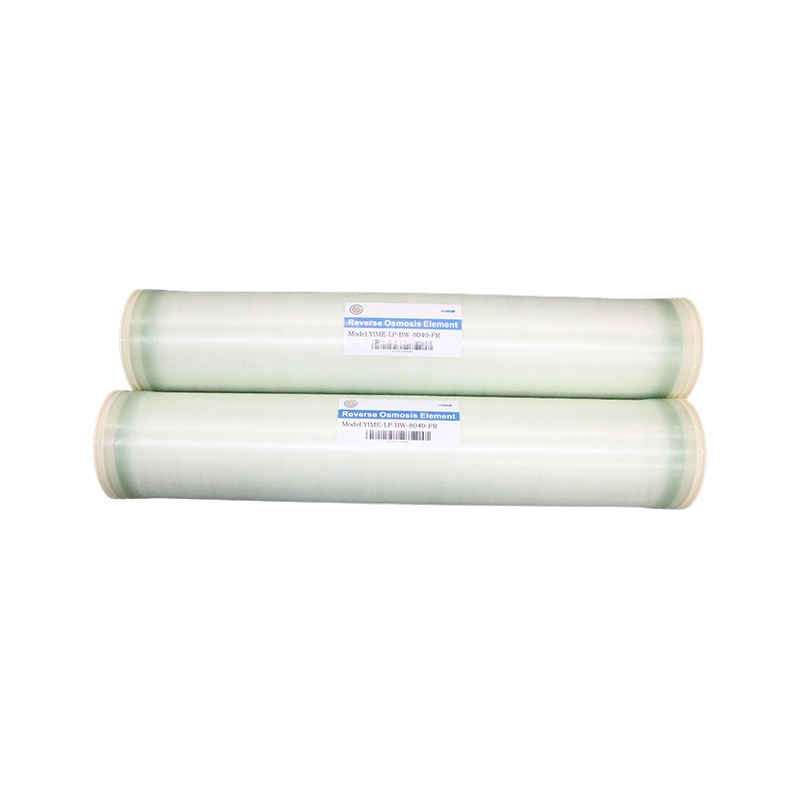What effect does the rolled structure design of the gpd reverse osmosis ro membrane have on water flux and pressure loss?
Release Time : 2025-04-17
The roll structure of gpd reverse osmosis ro membrane is one of its important designs widely used in the field of water treatment. This structural design has a key impact on the water flux and pressure loss of RO membrane, which is directly related to the performance and operating cost of the membrane system. A deep understanding of its influencing mechanism will help optimize the design and operation of the membrane system and improve water treatment efficiency.
The gpd reverse osmosis ro membrane structure is usually composed of multi-layer membrane materials, spacers, etc. The membrane and the spacers are alternately wound on the central tube to form a compact roll element. The inlet water enters from one end of the membrane element. Under the action of pressure, the water passes through the RO membrane and flows out along the axial direction of the central tube, while the concentrated brine is discharged from the other end. This structural design maximizes the effective area of the membrane and is easy to install and maintain.
The roll structure greatly increases the membrane area per unit volume by tightly winding the membrane. The increase in membrane area means that more water molecules have the opportunity to contact the membrane surface and pass through the membrane, thereby increasing the water flux. For example, under the same pressure and water quality conditions, the water flux of a wound RO membrane element is usually higher than that of a flat membrane element, because the wound structure can accommodate a larger area of membrane in a limited space.
The spacer in the wound structure not only supports the membrane, but also guides the water flow to be evenly distributed on the membrane surface. Uniform water flow distribution can avoid the situation where the water flow on the local membrane surface is too slow or too fast, making the water flux on the membrane surface more uniform. If the water flow is unevenly distributed, it may cause the water flux of some membrane surfaces to be too high, accelerating the pollution and damage of the membrane, while the water flux of other parts of the membrane surface cannot be fully utilized, reducing the water flux efficiency of the entire membrane element.
Since the water flow in the wound structure needs to flow in the channel between the membrane and the spacer, the water flow path is significantly increased compared to the simple straight-through structure. This increases the friction between the water flow and the channel wall during the flow process, resulting in increased pressure loss. Especially in the long-distance winding structure, the water flow needs to flow along the spiral channel for a long distance, and the pressure loss will be more significant.
Although the spacer helps to distribute the water flow and support the membrane, it will also produce a certain resistance to the water flow. The spacers of different materials, shapes and porosities have different effects on pressure loss. Generally speaking, the smaller the porosity of the spacer, the greater the resistance to the water flow and the greater the pressure loss. In addition, the surface roughness of the spacer will also affect the friction resistance of the water flow, and thus affect the pressure loss.
In order to reduce the pressure loss while increasing the water flux, it is necessary to optimize the parameters of the roll structure. For example, the reasonable selection of the width and number of windings of the membrane can minimize the length of the water flow path and reduce the pressure loss while ensuring sufficient membrane area. At the same time, optimizing the design of the spacer, using low-resistance spacer materials and reasonable porosity can also effectively reduce pressure loss and increase water flux. In addition, by adjusting the parameters such as the winding tension of the membrane, the gap between the membranes and the uniformity of the water flow channel can be improved, and the water flux and pressure loss performance can be further optimized.
In actual water treatment systems, the water flux and pressure loss of gpd reverse osmosis ro membrane are also affected by many factors such as water quality, water temperature, and operating pressure. For example, when treating high-concentration salt water or water containing more impurities, the membrane surface is prone to contamination, resulting in a decrease in water flux and an increase in pressure loss. Therefore, when designing and operating the membrane system, it is necessary to comprehensively consider these factors, combine the characteristics of the roll structure, and take corresponding pretreatment measures and operation strategies to ensure the stable operation and high-efficiency performance of the membrane system.
The roll structure design of gpd reverse osmosis ro membrane has an important influence on water flux and pressure loss. By increasing the membrane area and optimizing the water flow distribution, the roll structure can increase the water flux; but at the same time, due to the increase in water flow path and the resistance of the screen, it will also lead to an increase in pressure loss. By optimizing the roll structure parameters and comprehensively considering various factors in actual applications, a balance can be found between water flux and pressure loss, and the efficient operation of the RO membrane system can be achieved, providing a better quality and economical solution for the water treatment industry.







